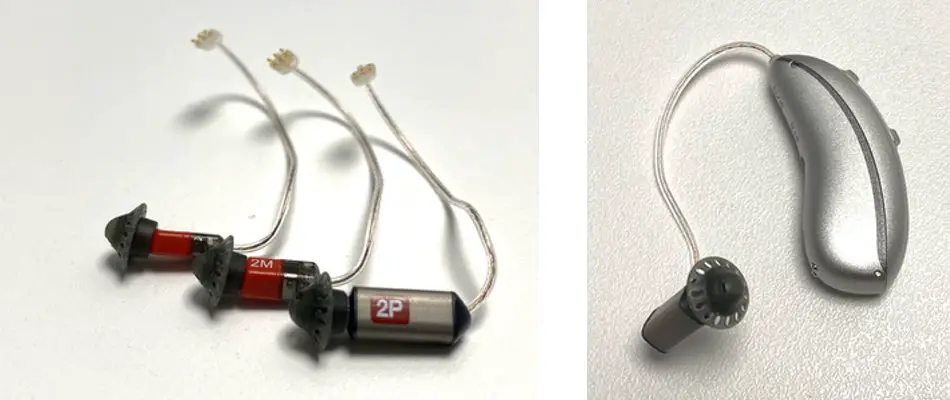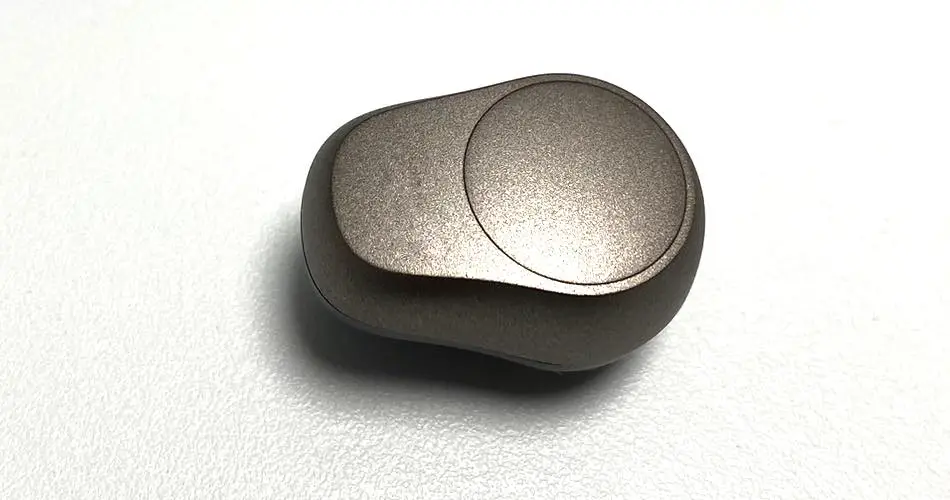Small ear canals can often make fitting hearing aids difficult. Especially when they occur in combination with larger hearing losses. In this article, you will learn which hearing aids are best to use in combination with a small ear canal.
Many people who are not yet familiar with the options for hearing aids look for the smallest hearing aids on the Internet, because they have to fit into the small ear canal. But this is a mistake. The smallest hearing aids are so-called IIC or CIC devices, which disappear completely in the ear canal.
But there would have to be enough space in the ear canal to accommodate such a small hearing aid in the ear canal. But with small ear canals, this is often not the case. Some ear canals are so narrow that the hearing care professional hardly has the opportunity to see the eardrum. In such a case, it makes much more sense to use a hearing aid where only a part of the hearing aid has to be placed in the ear. This is the case with so-called RIC or BTE hearing aids.
Only the loudspeaker is placed in the ear canal and the rest of the electronics is behind the ear. In comparison, with a CIC, everything has to be placed in the ear canal. The microphone, the processor, the battery or rechargeable battery, and the speaker. In the following, you will learn more about what you should consider when buying hearing aids in combination with small ear canals.
How to Make a Hearing Aid Fit Into a Small Ear Canal?
Behind the ear hearing aids and receiver (loudspeaker) in the canal hearing aids are partly positioned in the ear and partly behind the ear. Receiver in the ear hearing aids have usually three different sizes of receivers available. The smaller the receiver the less powerful it is.

Although smaller speakers have less power than larger ones, they are still generally good at compensating for mild to moderate hearing losses.
A custom earmold or silicone dome is placed around the speaker. Depending on the material, the part of the hearing aid that must then be inserted into the ear canal becomes 0.2-0.6mm thicker per side. The ultra-thin soft silicone domes do not always provide the same fit as a custom earmold, but they can often be fitted even in extremely narrow ear canals.
Of course, the recommendation for the earmold also depends on the steadiness of the ear tissue. some have very soft ears while others have quite hard cartilaginous tissue. In some cases, the ear canals may be so small that the earmold cannot be placed in the canal at all. Neither with a RIC, BTE, and certainly not with an in-the-ear hearing aid.
In such an extreme case, the earmold must find particularly good support in the area of the auricle. Since it cannot be hidden inside the ear, it becomes more visible. With a receiver in the canal device, for example, this means that the speaker will be somewhat more visible than with hearing aid users with larger ear canals.
In the picture below you can see such an example. The speaker sticks out a little bit of the custom earmold instead of being totally hidden and covered by the material of the earmold. As you can see on the right side of the picture the lab that produces the earmold or your in-the-ear hearing aid actually sees how far components will stick out of your ear. In most cases, they perfectly fit in your ear. But in doubt, your hearing care professional will make an impression of your ear and scan it.

With this 3D data, the hearing aid manufacturer or the lab can say if the hearing aid will fit perfectly in a small ear. If one manufacturer said no asking another one may be worthwhile. Also checking the possibilities in combination with different hearing aid brands. The components are slightly different in their shape. In some cases, a very powerful loudspeaker from brand A can not be fitted in a small ear while brand B can produce the desired result.
The Alternatives to Hearing Aids That Need to Be Placed in the Ear Canal
If fitting a hearing aid with positioning in the ear canal does not produce the desired results, hearing aids that are positioned directly on the bone behind the ear could be used.
Bone conduction hearing aids are used when a person cannot be offered sound through the ear canal. In this case, the sound is transmitted directly to the inner ear via the skull bone.

It is possible to either integrate bone conduction devices into a spectacle frame or to implant a plate directly into the skull bone, onto which the bone conduction device is later placed.
If you want to read more about alternatives to conventional hearing aids I have an article here for you ready.
People who suffer from conductive or mixed hearing loss and cannot be fitted with conventional hearing aids may benefit from a bone-anchored hearing aid (BAHA) under certain conditions. This device is also used in cases of unilateral deafness to redirect sound from the deaf side to the normally hearing side.
The BAHA consists of a titanium screw that is inserted into the skull bone behind the ear in a minor surgical procedure. A titanium anchor (abutment) is fixed to the screw, onto which a special hearing aid can then be attached. Infants are initially fitted with a headband to which the BAHA is attached.
